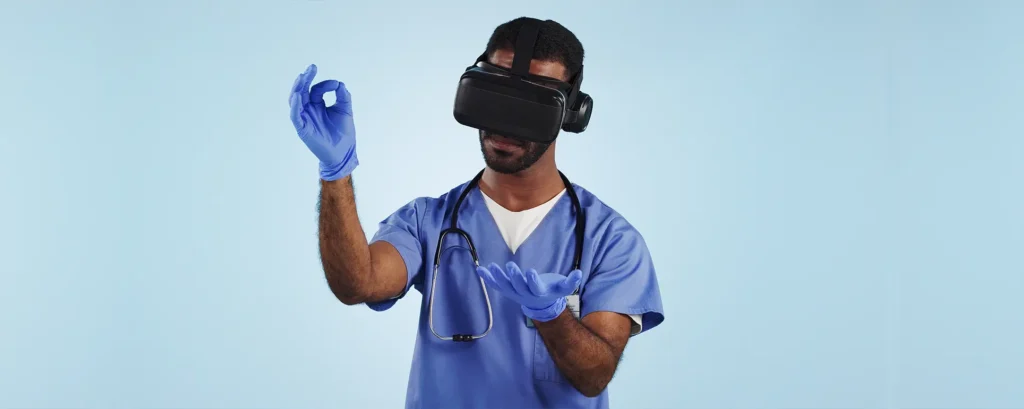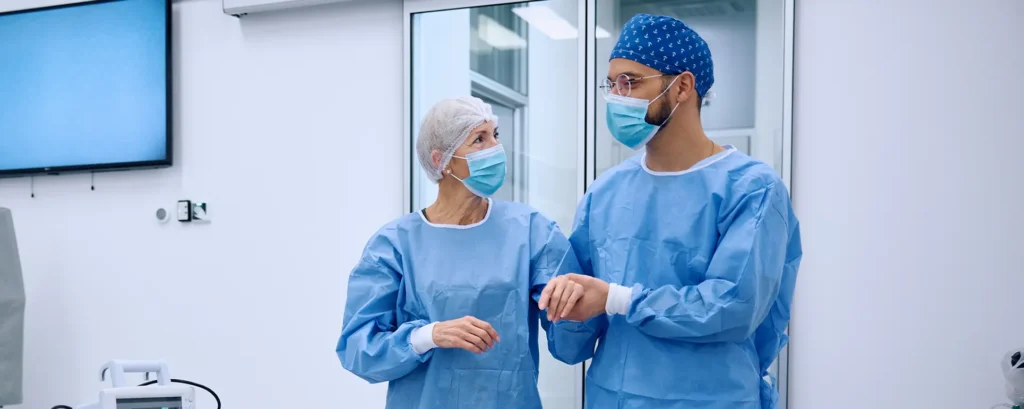Imagine a world where the best cataract surgeon doesn’t have to be in the same room as the patient. Instead, thanks to ultra-fast 5G networks, they could guide or even perform surgery remotely — sitting in London while the patient lies comfortably in a clinic in Nairobi, New Delhi, or Newcastle. This isn’t just science fiction anymore. With the arrival of 5G technology, the possibility of remote-assisted cataract surgery is moving from theory to early experimentation.
So what does this mean for patients, surgeons, and the future of eye care? In this article, we’ll walk through how 5G works in this context, the role of robotic systems and tele-surgical platforms, the challenges of safety and latency, and the exciting opportunities this could unlock for global healthcare access. By the end, you’ll have a clear picture of whether 5G-assisted cataract surgery could really become a reality — and what it might take to get there.
The Global Importance of Cataract Surgery
Cataracts are the leading cause of blindness worldwide. While surgery is straightforward and highly effective, millions of people still go untreated, especially in regions where access to skilled ophthalmologists is limited. For instance, in some countries there may be only a handful of trained cataract surgeons for millions of people in need.
This gap creates a powerful case for exploring technological solutions. If expert surgeons could supervise or carry out cataract surgery remotely using advanced tools, patients in underserved areas could gain access to the same quality of care as those living near major hospitals in developed nations. The global demand is clear, and technology like 5G might provide the bridge.
What Makes 5G Different from Earlier Networks?

To understand why 5G is being talked about in surgery, you need to look at its key features. Unlike 4G, which already allows video streaming and remote consultations, 5G offers:
- Ultra-low latency (as little as 1 millisecond delay)
- Gigabit speeds for data transfer
- Stable, reliable connectivity even with heavy data loads
These qualities are vital in a surgical context. Imagine a surgeon using robotic controls to guide a delicate incision on the eye. Even a delay of a few hundred milliseconds could be catastrophic. 5G reduces that risk, making it possible for human input and robotic action to align in near real-time.
The Rise of Robotic Surgery in Ophthalmology
Robotic systems in eye surgery aren’t new. Technologies like femtosecond lasers and robotic-assisted platforms have already been used to improve precision in lens fragmentation, corneal incisions, and capsulotomies. However, these are usually local systems — the surgeon operates them in the same theatre.
With 5G, the idea shifts to remote operation. Surgeons could sit at a console miles away and control robotic instruments that carry out surgery on the patient. This is similar to what’s already been tested in other surgical fields, such as general surgery and cardiology, where remote robotic operations have been performed over 5G networks. Cataract surgery, with its demand for extreme precision, could be the next frontier.
Tele-Surgical Platforms and Their Role
Tele-surgical platforms act as the link between the surgeon and the patient. They combine:
- Robotic arms capable of extremely fine movement
- High-definition video feeds that allow the surgeon to see the operative field
- Haptic feedback systems to give the surgeon a sense of touch
- Secure data transmission over 5G networks
The goal is to make the surgeon feel as though they are physically present with the patient, even if they are in a different country. This “immersive presence” is critical to patient safety and surgeon confidence.
Why Latency Matters So Much
Latency — the time it takes for data to travel from one point to another — is the biggest technical hurdle. In cataract surgery, where precision down to microns is required, even a small lag could mean the difference between a smooth lens extraction and damage to delicate eye structures.
5G dramatically reduces latency compared to 4G or standard broadband, but achieving this in real-world conditions (with variable signal quality, bandwidth competition, and geographical distance) remains challenging. Researchers are working on combining 5G with edge computing — processing data closer to where it’s needed — to cut down delays even further.
Early Experiments and Success Stories
Several pilot projects have already shown what might be possible:
- China and Europe have demonstrated remote surgeries (outside ophthalmology) where 5G networks connected surgeons to robotic systems hundreds of kilometres away.
- In ophthalmology, some studies have explored telesurgery models for training and simulated cataract procedures. These point to the feasibility of scaling up to real operations in the near future.
- Collaborations with telecom providers have also begun, testing how secure, medical-grade 5G networks could support clinical environments.
While no large-scale 5G-enabled cataract surgery has yet been reported, the direction of progress suggests it’s only a matter of time.
Safety Considerations in Remote Cataract Surgery

Safety is non-negotiable in eye surgery. Several issues need to be addressed before 5G-assisted cataract surgery can be widely adopted:
- Network redundancy: What happens if the 5G signal drops mid-surgery? Backup systems must be in place.
- Data security: Patient information must remain confidential, especially when transmitted across borders.
- Robotic reliability: Instruments must function flawlessly with minimal risk of error.
- Surgeon training: Specialists will need specific training to adapt their skills to robotic and remote interfaces.
These challenges don’t make remote surgery impossible, but they do mean progress will likely be gradual and highly regulated.
Expanding Access to Expertise
One of the most exciting benefits of 5G in cataract surgery is the potential to bring world-class expertise to underserved areas. A patient in a rural clinic could receive surgery guided by one of the top cataract surgeons in the world.
Even if full robotic operation isn’t possible at first, remote-assisted models could allow expert surgeons to guide local ophthalmologists in real time, offering feedback, advice, and support during the procedure. This hybrid approach could make advanced care more widely available long before fully remote surgery becomes routine.
Training the Next Generation of Surgeons
Another benefit lies in education. Surgical trainees could use 5G-enabled systems to practise under supervision from mentors located elsewhere. Real-time video, overlay guidance, and haptic feedback could help accelerate learning while ensuring safety.
This could be especially important in regions where there are too few specialists to train new ophthalmologists quickly enough. By extending mentorship globally, 5G could play a vital role in closing the gap between demand and supply of cataract surgeons.
Ethical and Regulatory Challenges
Alongside the technical and clinical questions, there are also broader issues to address:
- Medical licensing across borders: Can a surgeon in the UK legally perform or guide surgery in another country?
- Liability and accountability: If something goes wrong, who is responsible — the local team, the remote surgeon, or the technology provider?
- Equity of access: Will this technology benefit only those in well-funded hospitals, or can it truly reach the most underserved populations?
These questions will need careful thought before remote-assisted cataract surgery can become mainstream.
The Future: From Trials to Everyday Use
The road ahead is likely to follow a phased approach:
- Remote mentoring becomes common, where surgeons guide procedures over 5G without directly controlling the instruments.
- Hybrid models emerge, with robotic systems performing specific steps (such as capsulotomy) under remote supervision.
- Full remote robotic cataract surgery becomes feasible, once reliability, safety, and regulation are in place.
Each step will build confidence and refine the technology until fully remote surgery becomes a realistic option for patients worldwide.
Final Thoughts
So, could 5G make remote-assisted cataract surgery a reality? The answer is: not yet, but it’s getting closer every year. The technology exists in pieces — robotics, tele-surgical platforms, ultra-fast networks — but integrating them safely and reliably will take more time.
That said, the potential is transformative. From expanding global access to expert care, to training the next generation of surgeons, to pushing the limits of precision medicine, 5G could reshape how cataract surgery is delivered in the decades ahead.
For patients, it means that the best care may one day be available regardless of geography. For surgeons, it means a new way to share their expertise on a global stage. For healthcare systems, it promises efficiency and wider reach. The road is long, but the destination could redefine eye care forever.
References
- Singh, G., Casson, R. & Chan, W. (2021) ‘The potential impact of 5G telecommunication technology on ophthalmology’, Eye, 35, pp. 1859-1868. doi:10.1038/s41433-021-01450-z. Available at: https://doi.org/10.1038/s41433-021-01450-z
- Lu, E.S., Reppucci, V.S., Houston, S.K. III, Kras, A.L. & Miller, J.B. (2021) ‘Three-dimensional telesurgery and remote proctoring over a 5G network’, Digital Journal of Ophthalmology, 27(3), pp. 38-43. doi:10.5693/djo.01.2021.06.003. Available at: https://www.ncbi.nlm.nih.gov/pmc/articles/PMC8668170/
- Picozzi, P., Nocco, U., Puleo, G., Labate, C. & Cimolin, V. (2023) ‘Telemedicine and Robotic Surgery: A narrative review to analyse advantages, limitations and future developments’, Electronics, 13(1), 124. doi:10.3390/electronics13010124. Available at: https://www.mdpi.com/2079-9292/13/1/124
Xie, X., Tian, Y., Huang, J., Luo, Q. & Chen, T. (2025) ‘Surgery without distance: will 5G-based robot-assisted telesurgery redefine modern surgery?’, Translational Lung Cancer Research, [online ahead of print]. doi:10.21037/tlcr-2025-16. Available at: https://tlcr.amegroups.org/article/view/100779/html

